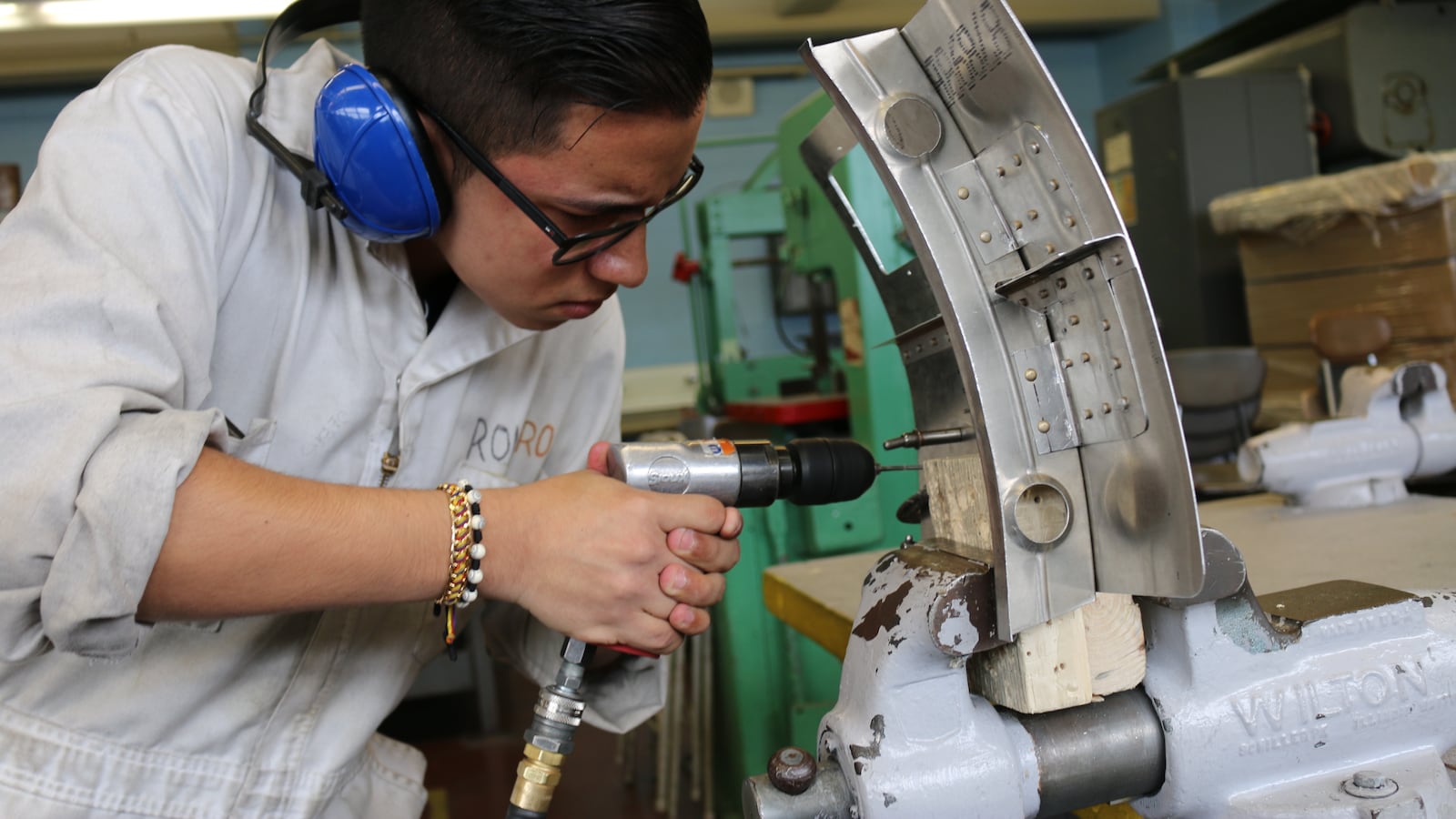As a high school teacher in Pennsylvania, Shaun Dougherty noticed that students in career-focused programs seemed much more engaged than his other students.
Now a researcher, Dougherty set out to see whether data backed up his experience. Could the programs not just prepare students for the workforce, but keep students from dropping out of school?
To find out, Dougherty studied Massachusetts’ 36 vocational and technical high schools, where students alternate between academic coursework and full-time work in areas like auto repair, graphic design, and machine technology. What he found was striking: At those schools, students were substantially more likely to graduate high school than similar peers at typical high schools.
“The intention for CTE is to help with skill development for long-term career and earnings potential,” said Dougherty, an assistant professor at the University of Connecticut. “The fact that it’s having this payoff on high school graduation is a positive, but perhaps unintended, consequence.”
Career and technical programs can come with downsides, too — in particular, offering training in skills that may eventually become obsolete or devalued. But the new research bolsters the academic case for the programs, a rare education initiative that carries bipartisan imprimatur.
In the study, published last month in the peer-reviewed journal Education Finance and Policy, Dougherty finds that the career and tech high school students came out far ahead of similar students on a number of metrics.
In addition to being 21 percentage points more likely to graduate high school, students from low-income families scored slightly higher on standardized tests. Graduation rates were also higher for higher-income students, though they did not see any test-score gains.
Those are encouraging results. Still, it’s possible that the students who chose to attend the vocational high schools were more motivated than their peers to begin with, skewing the results.
Dougherty addresses this by narrowing his lens to just three schools and using a different approach to nail down cause and effect. Using school admissions data, he compares students who just missed the cut-off to earn entry to students who just barely earned a spot — the idea being that the two groups of students are essentially identical.
Again, the results show that the career and technical schools notably increase the chances of graduating high school for both higher- and low-income students: by 7 to 10 percentage points and possibly more. In this case, there was no clear effect on test scores.
The approaches in tandem suggest Massachusetts’ career-focused high schools really do boost graduation rates.
That’s consistent with recent studies on career and tech programs in a variety of settings. Analyses of data from Philadelphia and Wake County, North Carolina found that students who randomly won a chance to attend a career-focused high school were more likely to graduate high school and attend college.
Other research by Dougherty has found that students in Arkansas who took several career-focused courses in one focus area are more likely to graduate than similar students who don’t. And using national data, two other recent studies found that students who took more CTE courses, particularly later in high school, were also more likely to graduate on time, compared to demographically similar students. (Keep in mind, though, that these studies are less able to clearly isolate cause and effect.)
That research generally doesn’t show clear positive effects on math and reading test scores — but the students also don’t find negative effects, which to Dougherty is an encouraging sign.
“One of the classic concerns with vocational and technical education is that by specializing in an area of training you might be trading off general knowledge,” he said. “You wouldn’t necessarily expect their test scores to be higher, but we might worry that they would be lower.”
The reason for the career and technical schools’ particular success is unclear. It could be that CTE programs are particularly effective at boosting non-academic skills like grit — or that students benefit from peers all motivated to participate in the same program.
Dougherty suggests that students may benefit from being able to select a school or program that’s a good fit for them. He also points to the specific regional structure of CTE schools in Massachusetts, where the “learning environment may make learning more relevant and engaging, while simultaneously reducing the stigma associated with participating in CTE, and providing better mentorship opportunities.”
Still, Dougherty cautions that the positive finding doesn’t necessarily mean that policymakers should rush to expand the programs. One concern is that growing such offerings could actually train too many students for a small pool of specific jobs. Another is that it’s not clear what makes a high-quality program.
“I’m very skeptical that we know exactly how to scale it well,” Dougherty said.


